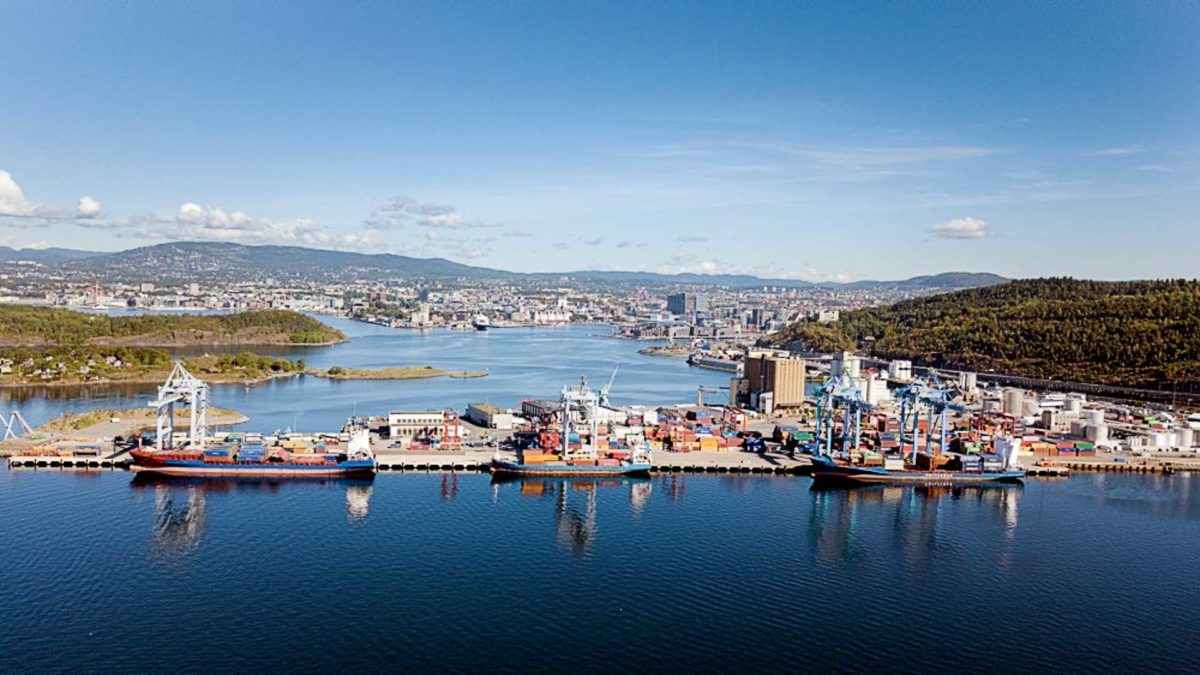Many cities have large construction and building activities. This triggers a lot of transportation. There is a need for transportation of surplus materials, construction raw materials and building materials – both in and out of the construction sites. Today, such transportation is largely carried out by trucks. This results in significant social costs related to dust, noise, air emissions, microplastics from tires, accidents, traffic jams and road wear. The longer the transportation by truck, the greater the social costs.
The relevant social costs could be reduced if a larger proportion of this transport is transferred to sea. Especially in cities, where building and construction activity is high, the necessary space must be available to achieve such efficient transportation. Port cities are fortunate in that efficient transportation between sea and land is already established.
Construction activities are often project-based and have their own challenges related to dust, noise and heavy traffic. This often triggers complaints from close neighbors, whether in residential areas, retail or other commercial activities. Stone and gravel is a non-renewable resource and should be used more intelligently than we traditionally do today. A mass terminal with permanent solutions will increase opportunities for better sorting and reuse of materials.
Such circular industry will initially generate more transportation. It is therefore important to ensure that such industrial operations are better designed, with safer driving patterns, better cleaning of vehicles, and also that zero-emission solutions at the terminal and charging for transport in and out at sea and on land are taken care of.
This pilot study will illustrate the environmental challenges facing the industry today and propose solutions for the near future. The pulp terminal will have zero-emission solutions with shore power, charging and reuse of pulp and water resources. The pilot study will map the necessary area to ensure circular solutions with access to the quay and safe access to the road network.
Port of Oslo (Oslo Havn) is the pilot owner and leads the work. In addition, major cargo owners such as Unicon, NCC, Veidekke and Forset Grus are contributing to the pilot study. Other partners are listed to the right.
Goal of pilot project
A bulk terminal in an urban port with great scaling potential and as a possible export solution to other port cities. This pilot study will investigate the characteristics of an environmental terminal for building and construction activities, as well as the social benefits compared to the current model with the use of fossil fuel trucks.
Realize an environmental terminal and verify the social benefits.
Activities
- Establish a pilot owner and pilot team, as well as a common understanding of the pilot’s main and sub-goals
- Map relevant needs for transportation in/out of the port
- Describe existing transportation solutions and challenges with these
- Describe the main features of the new “bulk terminal”, including exploring which activities should take place at the environmental terminal, including sorting and reuse of masses, waste and wash water
- Identify space requirements and shipping solutions in line with strict noise and dust requirements in the city.
- Explore whether there are currently terminals we can learn from, at home and abroad
- Calculate costs, environmental benefits, social benefits and other effects of a new terminal (environmental terminal and maritime transport vs. traditional truck transport)
- Identify stakeholders and barriers to realization
- Coordination with other projects in the Oslofjord and Trondheimsfjord (Green Fjordbulk)
- Establish a communication plan with the aim of overcoming the most important barriers
The pilot is still open to other participants.
Status
April 2023
The pilot project held an initial meeting with representatives from the municipality, port, suppliers, and other stakeholders. The project owner is open to additional participants and welcomes input on the work packages.
June 2023
The focus of the pilot project’s first phase has been to define the needs for the port terminal of the future, as a foundation for the environmental terminal of the future. The pilot has mapped available areas in the Port of Oslo. A permanent new and improved terminal in Kongshavn is expected to be ready in approximately 10 years. Therefore, the pilot is exploring the possibility of a temporary test facility at Grønlia, which could be ready within 1.5 years if the necessary permits are granted.
October 2023
The pilot is now focused on work package 3, which involves outlining the environmental terminal of the future.
January 2024
The estimated benefits include savings in transport costs, a reduction in CO2 emissions, reduced external costs distributed among sources, and decreased traffic congestion from mass transport.
April 2024
The Port of Oslo has received a letter of allocation from the City Council’s Department of Culture and Business (KON) to proceed with Kongshavn as the preliminary hub.
It can be concluded that an environmental terminal for mass transport can contribute to zero emissions and increase recycling in the long term.
May 2024
The pilot project is now concluded. The project owner, Port of Oslo, emphasizes the importance of good collaboration for the pilot’s results and highlights the roles of Skanska and Menon as main contributors.
The final report is available here.

